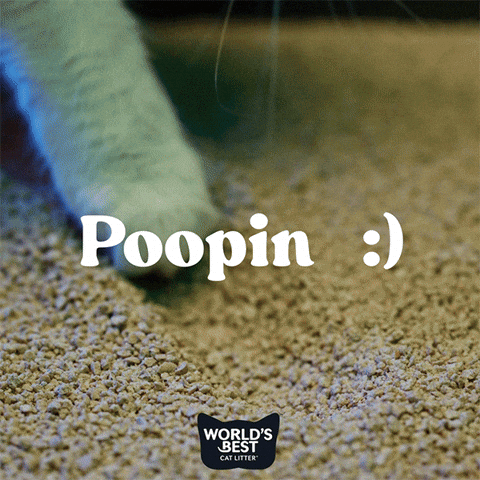
How Do I Stop My Cat's Litter Box From Smelling? Vet-Approved Picks
Share
The olfactory assault of a poorly maintained litter box has driven many cat owners to desperate measures—candles that merely mask the problem, air purifiers humming like anxious bees, even misguided threats of outdoor banishment whispered to unimpressed felines. Yet the solution to litter box odors lies not in warfare against smells but in understanding their origins. That distinctive ammonia punch arises from urea breakdown, while the sulfurous notes come from volatile organic compounds in feces—both byproducts of a carnivore's efficient digestion. The key to true odor control isn't just covering up these smells but disrupting the biological processes that create them, while respecting a cat's fastidious nature that makes them reject overly perfumed or harshly treated litter.

Why Does Your Cat’s Litter Box Smell So Bad — and How Can You Actually Fix It?
Litter selection forms the first line of defense, where science and feline preference engage in delicate negotiation. Clay litters, the traditional choice, absorb liquids effectively but often fail at locking away odors unless enhanced with carbon or baking soda additives. The porous structure of these minerals provides surface area for odor molecules to attach, yet without proper maintenance, they become saturated quickly—like a sponge that's absorbed all it can hold. Silica gel crystals, those tiny desiccants that resemble forbidden snacks, work differently by actually absorbing moisture into their structure, trapping urine odors deep within their microscopic pores. This technology, borrowed from industrial humidity control, excels in small spaces where ventilation is limited but may deter texture-sensitive cats with its unusual feel underfoot.
Plant-based litters crafted from pine, wheat, or corn bring biochemical advantages to the odor battle. These materials contain natural enzymes that break down urea before it can convert to ammonia, essentially digesting odors at the molecular level. The best among them employ a two-stage process—immediate absorption followed by gradual enzymatic action that continues working between cleanings. Yet even these biodegradable options have limitations; high humidity can trigger premature clump breakdown, and some varieties trade odor control for dust-free claims, leaving owners choosing between respiratory relief and nasal relief.
The much-touted clumping litters offer convenience but demand scrutiny regarding their true odor-controlling capabilities. Sodium bentonite's remarkable swelling properties create solid masses that are easy to remove, theoretically isolating waste and smell. However, incomplete clumping—often caused by insufficient litter depth or delayed scooping—leaches odor molecules back into the remaining litter like a slow-release stink bomb. Premium clumping varieties now incorporate antimicrobial minerals like zeolite that inhibit bacterial growth at the clump's edges, addressing this weakness. For multi-cat households, these enhanced clumpers can mean the difference between constant odor patrol and tolerable maintenance.
Odor elimination technology has evolved far beyond the perfumed litters of yesteryear that merely covered smells with floral assaults offensive to feline noses. Modern solutions employ chemistry that would impress a laboratory—activated carbon's maze-like molecular structure traps odor compounds through adsorption, while potassium permanganate oxidizes sulfur-based smells at the atomic level. Some litters now feature pH-modifying agents that maintain acidic conditions unfavorable to odor-producing bacteria, mimicking the natural preservation properties of cranberries or vinegar without the mess. These innovations work best when paired with proper litter depth—too shallow and the chemistry can't activate fully; too deep and oxygen can't reach the lower layers where anaerobic bacteria thrive.
The litter box itself plays an underappreciated role in odor containment. Plastic, while affordable, gradually develops microscopic scratches that harbor odor-causing bacteria—a phenomenon akin to a well-used cutting board that never quite smells clean. Antimicrobial plastics infused with silver ions or triclosan alternatives can mitigate this, though at higher cost. Stainless steel boxes, the new darling of odor-conscious cat owners, resist bacterial embedding and clean more thoroughly but conduct temperature in ways that may startle sensitive paws. Covered boxes seem like an obvious solution but often concentrate odors inside, creating a noxious surprise when the lid lifts—like opening a forgotten lunchbox left all summer in a locker.
Location strategy affects perceived odor as much as actual chemical reduction. Placing boxes in dark, enclosed spaces like basements or closets may hide them from guests but allows odors to build unnoticed until overwhelming. High-traffic areas with good air circulation force regular maintenance but risk litter tracking. The compromise lies in low-traffic yet well-ventilated spaces—bathrooms with exhaust fans, laundry rooms with airflow but not dampness, or dedicated litter furniture that filters smells through activated carbon panels while blending with home decor.
Cleaning frequency and technique make or break even the best litter systems. The ammonia smell that greets owners after work isn't just unpleasant—it's a timer showing how quickly urea breaks down in their specific environment. Scooping twice daily is the gold standard, but the timing should sync with a cat's elimination patterns—after meals are prime odor production periods. Wet waste removal deserves equal attention to solids; that innocuous-looking damp spot will become tomorrow's odor epicenter. Deep cleaning schedules depend on litter type—clay may need complete changes every two weeks, while silica can last a month if properly maintained—but always watch for the telltale "baking bread" smell that signals bacterial overgrowth no scooping can fix.
Diet's influence on litter box odors remains underdiscussed. Cheap protein sources high in sulfur-containing amino acids can turn a cat's waste into a biological weapon, while low-quality carbohydrates feed odor-producing gut bacteria. Premium foods with digestible proteins and prebiotic fibers often reduce waste volume and smell significantly—sometimes making more difference than litter changes. Hydration levels equally matter; concentrated urine from a water-averse cat carries stronger ammonia potential, making water fountains or wet food additions odor-control strategies in disguise.
For persistent odor emergencies, enzymatic cleaners break down odor molecules rather than just masking them. These biological solutions contain protease to dismantle protein-based urine components and lipase to tackle fatty residues in feces—essentially digesting the odor at its source. The best are pH-balanced to avoid leaving alkaline residues that actually attract cats back to re-soil the same spot. Steam cleaning can sanitize but risks baking odors into porous surfaces if used without enzymatic pretreatment—a mistake many learn only after their home develops a permanent "cat house" ambiance.
Multi-cat households face exponential odor challenges requiring tactical solutions. The standard "one box per cat plus one" rule prevents territorial avoidance that leads to hidden accidents, but strategic placement matters more—boxes shouldn't be clustered like airport restrooms but distributed to prevent odor concentration. Color-coding boxes to individual cats helps track who might be producing unusually smelly waste indicating health issues. For extreme cases, pheromone diffusers near boxes reduce stress-induced marking while air filters with activated carbon layers capture airborne odors before they spread.
Senior cats present special odor considerations as their changing biology alters waste chemistry. Kidney-concentrated urine screams ammonia louder, while arthritis may make covering behaviors haphazard. Low-sided boxes with premium odor-control litter become essential, sometimes paired with puppy pads underneath for misses. Dental issues leading to decreased grooming can result in fecal matter clinging to fur—a stealth odor source many owners don't discover until the "why does my cat smell" mystery persists despite pristine litter maintenance.
The psychological aspect of odor perception can't be ignored—what reads as "unbearable" to humans may be undetectable to cats, or vice versa. Cats evaluate cleanliness through scent markers humans interpret as dirty, creating a cross-species misunderstanding. The best systems balance human comfort with feline acceptance—if a cat rejects an odor-control method, no amount of human satisfaction makes it sustainable. Observant owners notice when their cat starts "holding it" longer or scratching imaginary litter outside the box—both signs the odor-control regimen has crossed from helpful to repellent.
Truly comprehensive odor control considers the entire waste lifecycle—from food bowl to litter box to trash can. Those scented litter baggies may contain smells temporarily but often delay trash removal, creating concentrated odor bombs on collection day. Sealed metal cans with baking soda lining outperform plastic, while compostable options require specific conditions to break down without releasing ammonia clouds. Some innovative systems now employ diaper genie-style mechanisms to seal waste in odor-blocking films, though cost and environmental impact may give pause.
Seasonal adjustments keep odor systems effective as environmental conditions change. Summer humidity accelerates bacterial growth in litter, requiring more frequent changes, while winter's closed windows concentrate smells unnoticed during breezier months. Holiday stressors—from visitors to routine disruptions—can trigger marking behaviors needing preemptive odor defense. Even a cat's natural seasonal coat changes affect how much litter dust clings to them, creating secondary odor pathways through the home.
The ultimate test of any odor-control system comes not from human noses but feline behavior. A cat that enters its box willingly, digs thoroughly, and covers properly is voting approval with its paws. When the delicate balance tips too far toward human preferences—overpowering scents, harsh chemicals, or infrequent cleaning masked by perfumes—cats stage their silent protests in ways that inevitably create more odor problems. The sweet spot exists where human and feline needs align: a box that smells like nothing to you smells like home to them.


